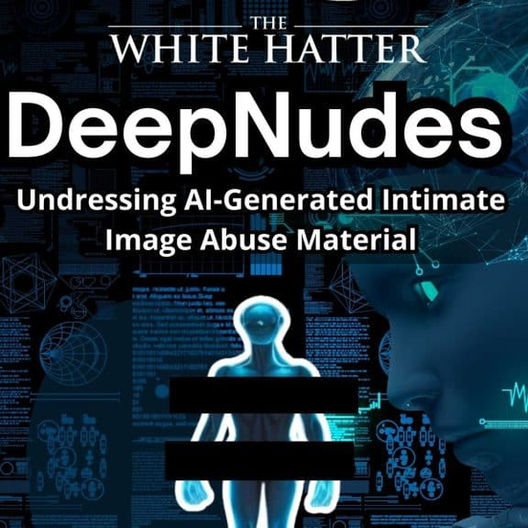Bypassing Age-Gating: Let The New Digital Cat-and-Mouse Game Begin
- The White Hatter

- Sep 27
- 4 min read
Updated: Oct 2

We have been paying attention to online discussion groups where both teens and adults are voicing their frustration with age-gating protocols, especially as new legislation pushes for stronger age-assurance measures to be put in place in some countries.
Across online forums like Reddit, a hot topic has emerged, “how to get around age-gating protocols?” These age-gating systems are being introduced more often by social media platforms, gaming sites, and third party age restricted services, with the expectation that they will only grow in number over the next few years.
While some parents and special interest groups may view age-gating as a safety net, the reality is more complicated. Young people and other users are actively experimenting with ways to bypass these barriers. The result is a modern version of Spy vs Spy, a cat-and-mouse battle between technology vendors trying to enforce restrictions, and users determined to sneak past them. This new push to age verification has become a challenge.
Below are six of the most common tactics currently being shared online. We have no doubt that his list will grow. According to some of the discussion, these by-passes have mixed results, depending on the age-gating protocol being used.
1. Identity Substitution
The simplest method is using someone else’s credentials. A child might borrow a parent’s or older sibling’s account, or log in on a device that’s already been verified. We are already seeing pre-verified accounts being sold or traded online, giving users an easy “back door.” (1)(2)
2. Synthetic Identities and Fakes
With digital tools becoming more sophisticated, fake IDs and synthetic digital personas are increasingly common. Beyond photoshopped documents, there are emerging examples of deepfaked biometric material, such as AI-generated faces, voices, designed to trick verification systems.
3. Technical Spoofing
This approach manipulates the technical side of access, and two of the most common ways discussed are:
VPNs (Virtual Private Networks) hide the user’s real location by routing traffic through other servers.
DNS spoofing redirects connections through proxy servers in countries without strict verification laws, making it look like the user is logging in from somewhere else. From the platform’s perspective, it appears that everything checks out.
4. Automation and Scale
The rise of artificial intelligence introduces a new layer of complexity. We have seen chats where AI agents are being trained to repeatedly test verification systems, adapting their answers until they slip through. For those who are familiar with pen-testing, this is commonly know as “red team tactics.” (3) What once took hours of trial and error can now be done automatically in seconds.
5. Social Engineering
Not every bypass is technical. Sometimes kids simply ask an older sibling, parent, or friend to approve access on their behalf. A little persuasion or guilt can be just as effective as the most advanced software.
6. Pre-Paid Credit Cards
Pre-paid credit cards bypass payment-based age checks tied to credit-card verification.
What is really interesting is to read how the idea of build your own underground networks that can be self hosted are now also creating some traction.
7.Fake Masks
Researchers in Melbourne Australia have found popular facial scanning age verification tools can be tricked when users wear masks or other party costumes. (4)
When governments implement age-gating requirements, their scope usually extends only to regulated platforms. This leaves a gap, because unregulated, self-hosted networks exist outside that formal ecosystem. These networks do not necessarily adhere to the same compliance standards, allowing them to operate without the oversight or accountability expected of mainstream services.
The barrier to creating independent digital spaces is low. Anyone with modest technical skills can set up a server or a peer-to-peer service that exists beyond the reach of app stores, internet service provider parental frameworks, or government mandated checks. These “shadow” systems, operating on private infrastructure, can avoid the built-in enforcement mechanisms designed to ensure age-gating on official platforms.
This is not a new idea. There are parallels in areas such as music and movie piracy, encrypted messaging services, and darknet marketplaces. Each time mainstream gateways impose tighter controls, motivated individuals and communities have shown a tendency to shift toward alternative infrastructures. These past examples illustrate how efforts to regulate digital environments often create a displacement effect rather than eliminating the underlying behaviours.
The unintended consequence of strict age-gating legislation is that it can push some users, including youth and teens, toward these unregulated and potentially more dangerous fringe networks, especially for those youth and teens who are already at risk. In seeking to protect children, policymakers risk driving them into online spaces that are less accountable, less transparent, and more difficult to monitor. Regulators face a delicate balancing act, enforcing protections while also acknowledging the possibility that overly rigid controls may fuel the very risks they are meant to reduce.
Age-gating is one of many tools designed to protect young users online, but it’s not foolproof. Like a fence in the backyard it sets a boundary, however, fences can be climbed, tunnelled under, or opened with someone else’s key.
The cat-and-mouse game between tech companies and users to figure out ways to bypass age-gating protocols isn’t likely to end. As soon as platforms roll out stronger safeguards, determined users begin testing and sharing new workarounds. Each side learns from the other, creating a cycle of constant adjustment. For parents, this means that no system can be seen as completely reliable, and family guidance will remain just as important as technical barriers.
Digital Food For Thought
The White Hatter
Facts Not Fear, Facts Not Emotions, Enlighten Not Frighten, Know Tech Not No Tech
References:














